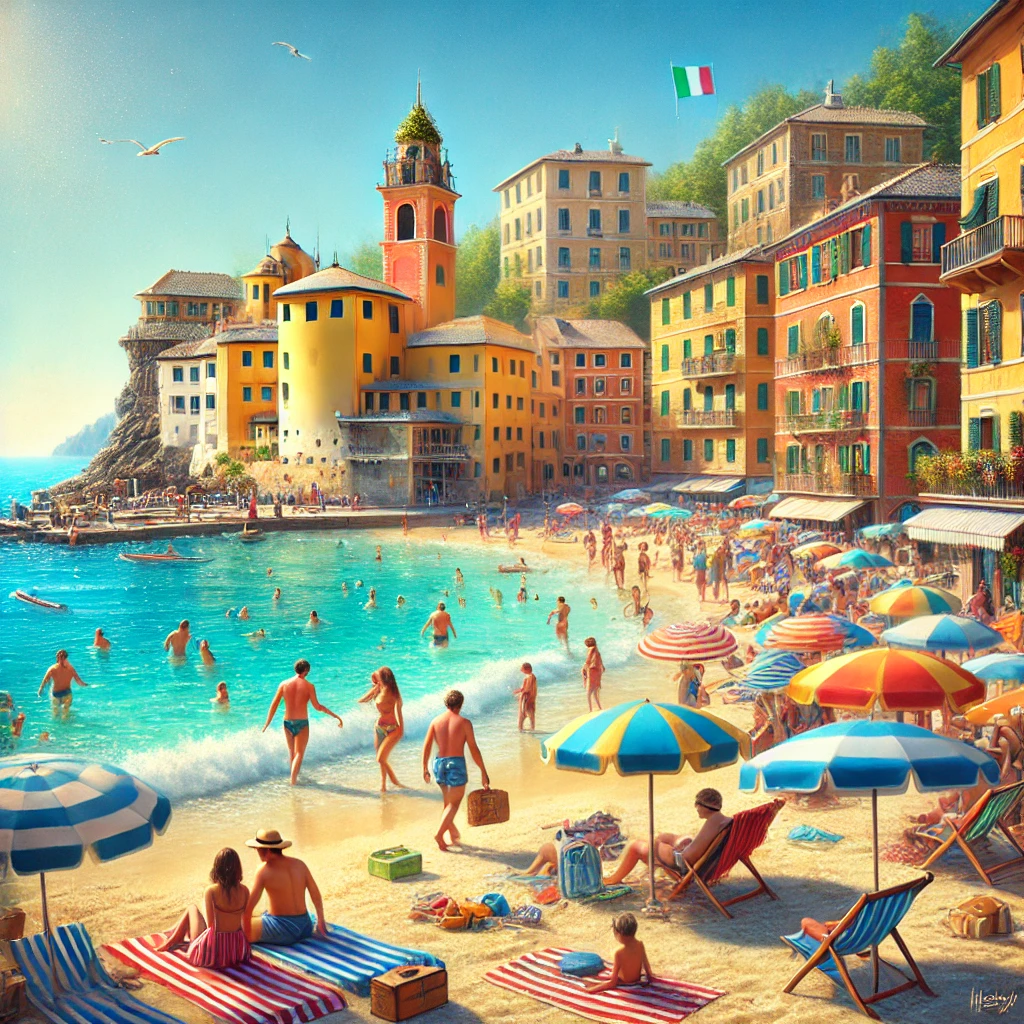Knowing days, months, and seasons in Italian is very important. These terms are essential for everyday conversations, planning events, or simply understanding the local culture when visiting Italy. In this guide, you'll learn how to say the days of the week, months of the year, and seasons in Italian, along with some practical examples. Let's get started!
Days of the Week in Italian (I giorni della settimana)
In Italian, the days of the week are called “I giorni della settimana.”
The days are not capitalized, unless they appear at the start of a sentence. Here is a quick guide to the days of the week in Italian and their English equivalents.
To help you memorize them, you can link the days to familiar words in English. For example, lunedì sounds a bit like lunar (related to the moon, linked with Monday. You can create your own associations -have fun with it! 😊
Remember that sabato (Saturday) and domenica (Sunday) make up the weekend.
Here are some example sentences:
Oggi è lunedì. (Today is Monday.)
Martedì vado in palestra. (On Tuesday, I go to the gym.)
Mercoledì sera guardo un film. (On Wednesday evening, I watch a movie.)
Giovedì preparo la cena. (On Thursday, I prepare dinner.)
Venerdì esco con i miei amici. (On Friday, I go out with my friends.)
Sabato faccio una passeggiata al parco. (On Saturday, I take a walk in the park.)
Domenica riposo e leggo un libro. (On Sunday, I relax and read a book.)
Months of the Year in Italian (I mesi dell'anno)
Just like the days of the week, Italian months are not capitalized. Here's a list to help you memorize them.
Here are some sentences with months:
A gennaio nevica spesso in montagna. (In January, it often snows in the mountains.)
Il Carnevale è a febbraio. (Carnival is in February.)
A marzo inizia la primavera. (In March, spring begins.)
Il mio anniversario è ad aprile. (My anniversary is in April.)
A maggio, i fiori sono in piena fioritura. (In May, the flowers are in full bloom.)
A giugno finisce la scuola. (In June, school ends.)
Luglio è il mese perfetto per andare al mare. (July is the perfect month to go to the beach.)
Molti italiani sono in vacanza ad agosto. (Many Italians are on vacation in August.)
A settembre, le giornate iniziano ad accorciarsi. (In September, the days start getting shorter.)
Ad ottobre si celebra Halloween. (In October, Halloween is celebrated.)
A novembre, fa più freddo. (In November, it gets colder.)
A dicembre decoriamo l'albero di Natale. (In December, we decorate the Christmas tree.)
Seasons in Italian (Le stagioni)
In Italy, the seasons are more than just changes in weather—they shape the way Italians live, celebrate, and enjoy life. Each season brings its own traditions, foods, and activities that are special to Italian culture.
Primavera (Spring) is a time of new beginnings. The weather gets warmer, and flowers bloom everywhere. Italians enjoy the outdoors, taking walks and having picnics. Many festivals celebrate nature and agriculture. This is also the time when people start planting their gardens with fresh herbs and vegetables like basil and tomatoes.
Estate (Summer) is full of sunshine and relaxation. It’s the most popular time for vacations, and many Italians go to the beach. In August, there’s a special holiday called "Ferragosto," where families and friends come together to enjoy good food and celebrate the peak of summer. Traditional summer dishes include fresh salads, seafood, and lots of gelato. There are also many outdoor festivals, concerts, and local food fairs all over Italy.
Autunno (Autumn) is all about harvest and enjoying the fruits of the land. Grapes are picked to make wine, and olives are harvested for olive oil. Truffles, mushrooms, and chestnuts are also popular in this season. The landscapes turn beautiful shades of red, orange, and yellow, making places like Tuscany and Umbria even more stunning. Italians enjoy hearty meals during this time, with warm dishes made from the autumn produce.
Inverno (Winter) brings colder weather and festive celebrations. The most important time of winter is Christmas, and Italians celebrate with family feasts, lights, and decorations. Traditional winter foods include sweets like panettone and torrone, as well as pasta dishes unique to the season. New Year’s Eve is also a big celebration, with fireworks and family gatherings. In northern Italy, winter is also the season for skiing in the Alps, making it a favorite time for mountain holidays.
Each season in Italy has its own special traditions and ways of celebrating life. Whether it's the fresh energy of spring, the fun of summer, the warmth of autumn's harvest, or the festive spirit of winter, the seasons in Italy make every time of year special and enjoyable.
Here are some example sentences for each season:
In primavera, mi piace fare lunghe passeggiate. (In spring, I like to take long walks.)
In estate andiamo spesso al mare. (In summer, we often go to the beach.)
In autunno, le foglie cambiano colore. (In autumn, the leaves change color.)
In inverno, beviamo cioccolata calda.. (In winter, we drink hot chocolate.)
Knowing the days, months, and seasons in Italian is a fantastic way to start engaging in everyday conversations. These words and phrases come in handy when making plans, discussing events, or simply chatting with friends. The more you practice, the more naturally they will come to you.
So, keep practicing, and soon you’ll feel comfortable using these basic terms in your Italian conversations.







